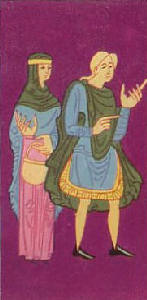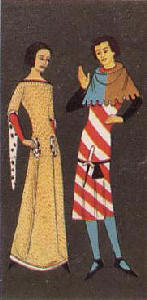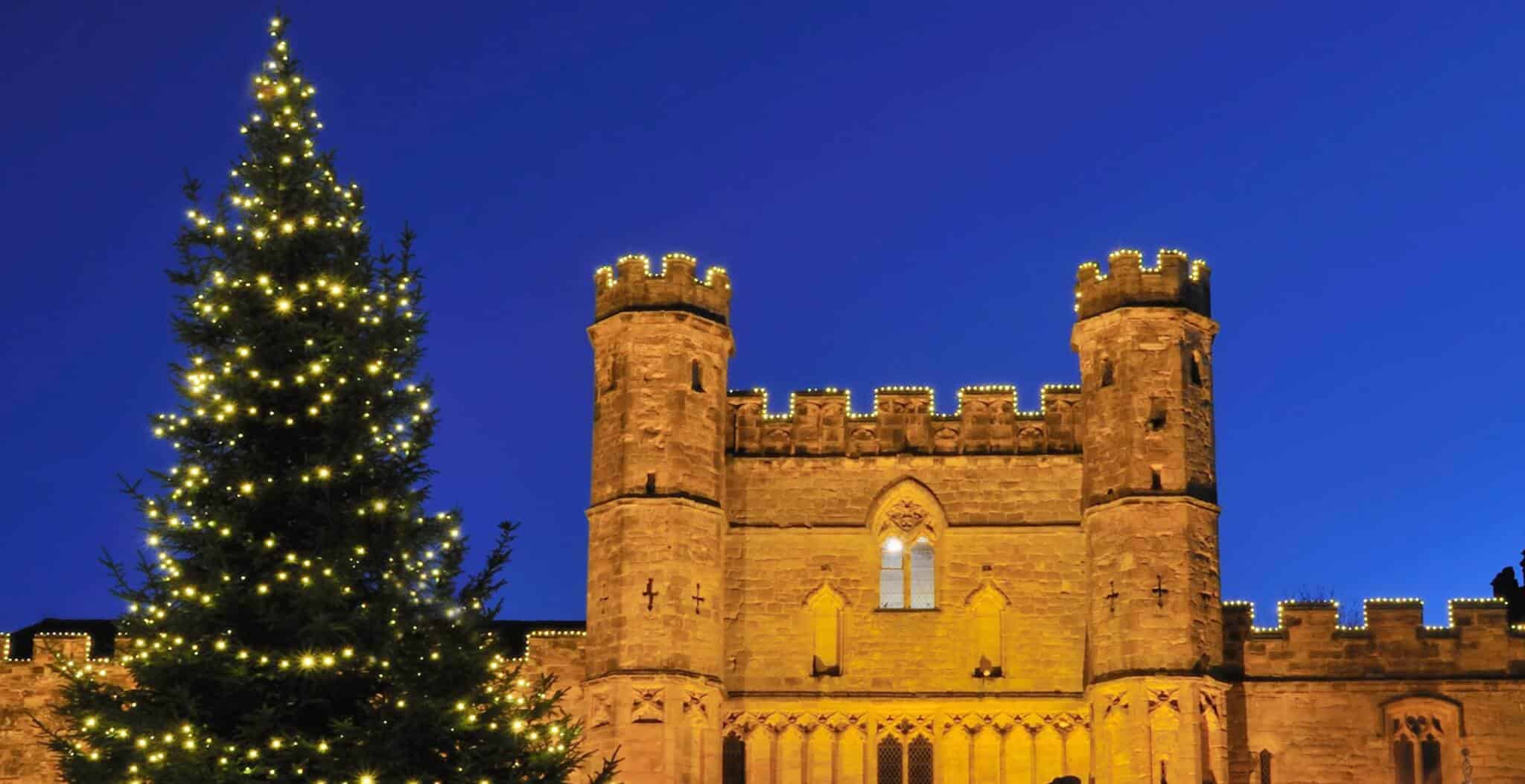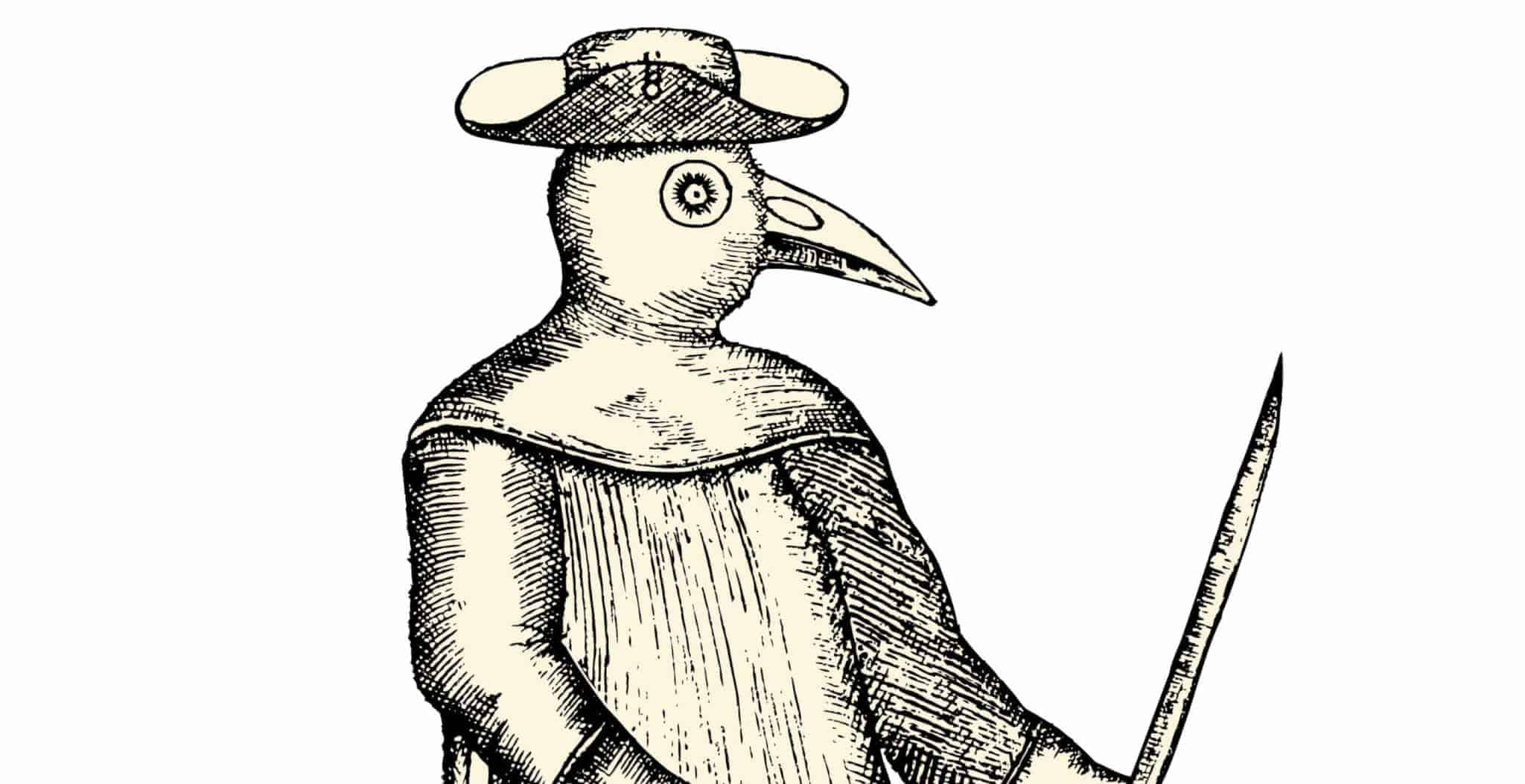Welcome to part one of our Fashion Through the Ages series. Starting from medieval fashion ending at the swinging sixties, this section covers British fashion from the Normans through medieval and middle ages to the end of the 15th century.
 |
Day Clothes about 1050
This man and woman (left) date from about 1050, just before the Norman Conquest in 1066. They wear the basic medieval garments: a tunic, probably of wool, slightly fitted with a high neck and long sleeves, usually worn over a linen shirt. The lady’s tunic, similar to the man’s but longer, has a semi-circular mantle fastening on the shoulder. The lady covers her long hair with a hood held by a band, and carries a travelling pouch; the man wears loose hose and leather shoes. The Anglo Saxons were known for their skill in embroidery and braid weaving, like that trimming the man’s tunic. |
 |
Day and Travelling Clothes about 1150
Fashion changed slowly in medieval times. This man and woman (left) still wear the semi-circular shoulder fastening mantles and tunics like those of a century earlier, differing only in being more closely fittedand having long flowing cuffs.Long hair was an Anglo-Saxon fashion borrowed by the Normans, and the woman has hers braided into cloth-covered plaits beneath her hood. The man is dressed for travelling in a hooded fur cloak and pointed hat. He wears cloth bound leggings instead of hose. His feet are bare here, but some contemporary shoes were quite decorative. |
 |
Travelling Clothes about 1250 (left)
By 1250 men’s and women’s tunics were cut with a wide upper sleeve. Most men, except the elderly, preferred tunics short. Cloaks were usually held by a cord at the shoulder. A variety of loose over-gowns were also popular, and these had sleeves with two openings, allowing them to hang loosely like the university gowns based on them and still seen today. Right: Lady wearing a henin (14th century) |
 |
Day clothes about 1300
Right: Lady c. 1346 |
 |
Man’s Day Clothes about 1430
This early Renaissance man (left) |
 |
Lady’s Day Dress about 1490
This lady (left) of about 1490 wears a rich gown of thick material brocaded with gold. This line foreshadows the severe styles of the court of the early Tudors, with a low waist and high neckline. Her skirt has a train but is pinned up at the back for convenience when walking and to show off the fur lining. Her sleeves are in a new fashion, funnel shaped, and faced with fur. She wears a hood, with cape dangling like a curtain, front turned up and stiffened, and worn over a wired and jewelled undercap almost concealing her scraped back hair. Her shoes have very broad toes. Materials are rich and heavy, many imported from Flanders and Italy. |
 |
Man’s Day Clothes about 1490
This young man wears clothes in the ‘Italian Fashion’, much less enveloping than those those of his lady above. His doublet reaches only to his waist and is very tight, with slits on the chest and sleeves giving room to move and an opportunity for his fine shirt to be seen. His hose are tied to the waist with ‘points’ (laces) and and fasten in the front with a ‘cod piece’ (flap). For riding he wears protective leather stockings, and his shoes have broad toes. This style replaced peaked shoes in around 1480. His short loose gown with long hanging sleeves is cut to hang open and show the contrasting facings. His hair is shoulder length and his flat hat has a jewelled rim. |
Related Links:Part 1 – Medieval Fashion |



 The woman’s plaits are coiled in a bun at each ear sometimes covered with a net, and the flat headband is kept in place by a veil or ‘wimpole’ drawn closely under the chin.
The woman’s plaits are coiled in a bun at each ear sometimes covered with a net, and the flat headband is kept in place by a veil or ‘wimpole’ drawn closely under the chin. The young man (left) is wearing a shorter tunic and pointed shoes. These shoes were characteristic of the 14th century and were called crackowes or poulaines, and are believed to have derived from Poland. The length of the toe was said to indicate the rank of the wearer and became more and more exaggerated by the end of the 14th century.
The young man (left) is wearing a shorter tunic and pointed shoes. These shoes were characteristic of the 14th century and were called crackowes or poulaines, and are believed to have derived from Poland. The length of the toe was said to indicate the rank of the wearer and became more and more exaggerated by the end of the 14th century.


